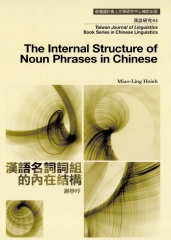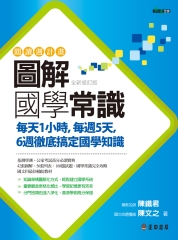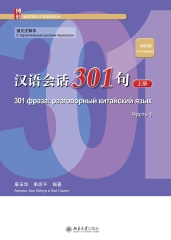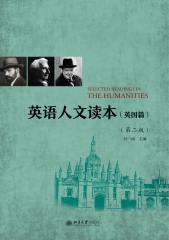- 首頁
- >
- 書籍詳目頁
- 作者: 謝妙玲 (著)
- 學科分類: 語言文學類
- 書籍分類: 語言學 ; 中文 ; 文學院
- 出版社: 文鶴出版台灣語言學專書
- 出版地:臺灣
- 出版日期:2008
- 語文:英文
- ISBN/識別號:9789861472751
- DOI: 10.6533/NCCULING-9789861472751
The Internal Structure of Noun Phrases in Chinese 漢語名詞詞語的內在結構
可使用:0人
線上閱讀中:0人
下載閱讀中:0人
借閱天數:0天

推薦採購不提供QR CODE
線上閱讀
本書提供兩種檔案格式,請選擇開啟:
EPUB彈性排版,可依載具大小自動斷行或換頁,較適合小螢幕閱讀。
書籍內容
TOP
This study investigates the internal structure of noun phrases In Chinese and argues that number, referentiality, and totality/partitivity are all syntactically represented. Viewing number in a new light, it claims that number in a classifier language is syntactically encoded via the use of a $P, i.e., NumP, the head of which is occupied by a classifier/massifier (cf. Boer 2005). Plurality Is realized differently in a #P via the use of numerals, the plural classifier xie, quantifiers, or the reduplication of classifiers/massiflers. The plural marker-men is a derivational suffix marking either collective plurality or semantic plurality, resolving the problem that syntactic plurality may co-occur with semantic plurality when syntactic plurality marks an indeterminate quantity.Unlike the standard head-complement analysis that assumes a DP-NumP-CIP-DP hierarchy, this study argues that a numeral or a quantifier enters into a relation with a classifier/massilier, forming a UP A P (with or without a demonstrative) is then merged into the Spec of NP for the NP to take a pure quantificational interpretation and raises to the Spec of DP for a check of referential interpretation with the D (eterminer) head. The highest position, i.e., the Spec of KP, may be occupied by a #P for a totality/partitive interpretation (ct. Lamontagne and Travis (1986) for the use of K to represent Case) . The evidence for the KP-DP-NP nominal hierarchy, analogous to the CP-TP-VP hierarchy at a causal level, comes from different types of modifiers and the co-occurrence restrictions on the use of two #Ps.Theoretically, the ideas that a classifier/massifier is the locus of number and that a #P is able to occur in three different possible positions simplify the representation of a noun phrase with only three major layers. It is also shown that language may have the same functional categories, but the way they are combined may be different from language to language.
同類型書籍推薦
TOP














